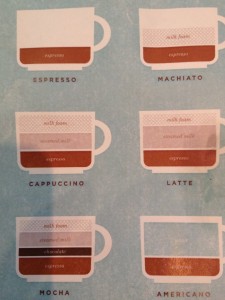 The New York Times Online, Dylan Hollingsworth Photographer
The New York Times Online, Dylan Hollingsworth Photographer
I will preface this post by saying that I’m thrilled that my beloved Oak Cliff is getting so much attention in the national media. From New York Times travel profiles to Cooking Channel star strolls down Bishop Avenue, this is the sort of recognition that will benefit our economy and will finally give Oak Cliff a little bit of the respect it deserves but has long been denied.
But…….They should at least attempt to get their facts straight when they talk about us. This Sunday an article by Carol Huang will appear in the print edition of The New York Times’ Travel Section entitled, “In Dallas, Turning the Page Marked Nov. 22, 1963.” Ms. Huang does a fine job of listing fun dining, shopping and entertainment hotspots in Oak Cliff’s funky Bishop Arts District. But her knowledge of the history and demographics of Oak Cliff is nonexistent, and the premise of the article borders on the absurd. According to Ms. Huang’s article, it would appear that the entirety of Oak Cliff consists of Davis and Jefferson, and the reason why Oak Cliff has been neglected by the rest of Dallas for decades is, wait for it, THE JFK ASSASSINATION!!!!!!!! Because Oak Cliff is home to Oswald’s house and the Texas Theater, don’t you know? I agree with the Dallas Observer‘s opinion that “attributing the neighborhood’s recent growth to declining institutional memory of the assassination is just lazy.”
Yes, New York Times – the venerable gray lady that arrives on my doorstep and in my email box every day – your reporting, in this instance, is lazy. Oak Cliff is not the South Bronx. Though it suffers its fair share of crime, it is not a cesspool of violence and depravation, and it never has been. Though the small portion of Oak Cliff surrounding the Bishop Arts District may feel like current-day Brooklyn, Oak Cliff as a whole bears a closer resemblance to Brooklyn’s middle-class, more sedate neighboring borough of Queens. And, as a multigenerational Oak Cliff’er and daughter of one of Dallas’ leading African-American educators and historians, I think I can say with some authority that the reason Oak Cliff was ignored for decades by the rest of Dallas had nothing to do with Oswald or the JFK Assassination or the location of the Texas Theatre. It was the result of a phenomenon known as “white flight” that occurred in cities all around the country and is well-remembered by most Americans over the age of 30. And Oak Cliff’s current resurgence is a reflection of the migration of urban Americans back to neighborhoods closer to city centers around the country for all the reasons most of us already know. Duh.
As The TexPatch has repeatedly reported, Oak Cliff is a diverse, middle class area of Dallas with pockets of both poverty and privilege, and a predominance of middle class residents and brick ranch-style homes. It is much larger and more diverse than the shabby-chic craftsman cottages and hipster brew pubs of the small, but bustling Bishop Arts District. Many white residents never left – relishing their secret, tranquil location minutes from the center of downtown Dallas. And it was an aspirational neighborhood for Blacks and Hispanics that desired an alternative to South and West Dallas but were shunned by our North Dallas neighbors. I grew up surrounded by Black doctors, lawyers, educators, politicians, athletes and civil servants in a neighborhood that was all white when my parents moved there in the early ’60s, but soon became predominantly African-American. It has its share of problems, but Oak Cliff is a great place.
This “seedy reputation” that Ms. Huang refers to sounds like the unsubstantiated stereotypes that were perpetuated by wealthy North Dallasites for many years. For no other reason than the fact that too many Blacks and Hispanics resided there for comfort (recall The TexPatch’s post regarding a young ’80s-era Highland Park’er referring to “those gross Blacks and Mexicans” in D Magazine). The TexPat is not North-Dallas-Bashing – in fact, I went to private school in North Dallas from K-12 and had an ideal experience during a time in Dallas’ history when the City’s general atmosphere was not exactly “we are the world.” But when a young, Northeastern reporter spends a couple of days in my neighborhood and spews stale stereotypes and tenuous theories with no basis in history or even reality, The TexPat has to speak up. As a person of color, and a native of Oak Cliff, I’m offended.
I wrote a letter to the editor.
 Follow
Follow



